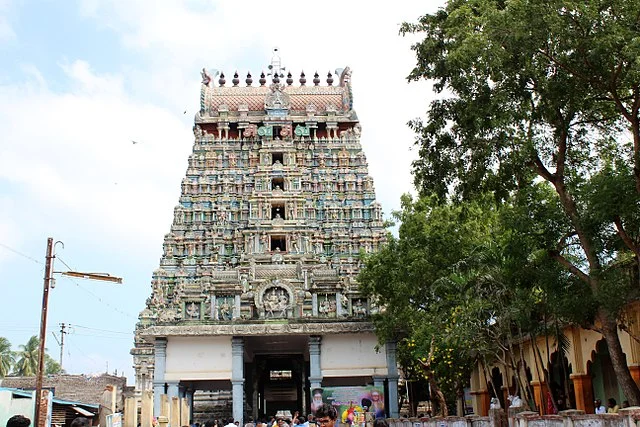The Amritaghateswarar Abirami Temple, located in Thirukkadaiyur, Tamil Nadu, holds significant historical and religious importance in Hinduism. Dedicated to the deity Shiva, who is worshipped here as Amritaghateswarar, this temple represents ancient South Indian temple architecture and reflects the religious practices and beliefs surrounding the worship of Shiva. The temple is especially known for its connection to long life, with devotees visiting to perform rituals for longevity and to overcome fears of untimely death.
Get your dose of History via Email
Historical Background

The temple’s origins trace back to the Chola dynasty, around the 11th century AD, although legends associated with the temple are much older. The current structure reflects renovations and expansions by later rulers, especially the Nayakas of Thanjavur during the 16th and 17th centuries AD. Its architecture and inscriptions provide insights into the region’s political history and cultural practices during these periods.
Architectural Design
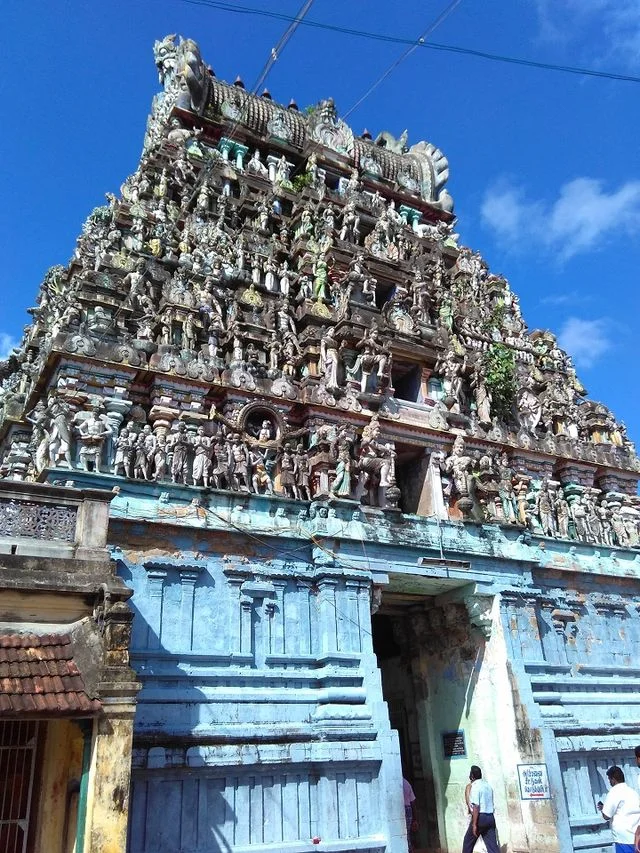
The temple complex spans over 11 acres, with numerous shrines and intricate sculptures. The temple’s gopurams (gateway towers) and mandapas (pillared halls) are typical of Dravidian architectural style. The sanctum sanctorum houses the main deity, Amritaghateswarar, representing Shiva. Close to this sanctum is the shrine of Abirami, the consort goddess. Both deities are adorned with intricate artwork and carvings, symbolizing devotion and craftsmanship.
The temple’s design includes several shrines dedicated to other deities within the Hindu pantheon, such as Ganesha, Murugan, and the Navagrahas (nine planetary deities). These shrines allow devotees to perform specific rituals dedicated to each deity, reinforcing the temple’s status as a site for varied worship practices.
Religious Significance
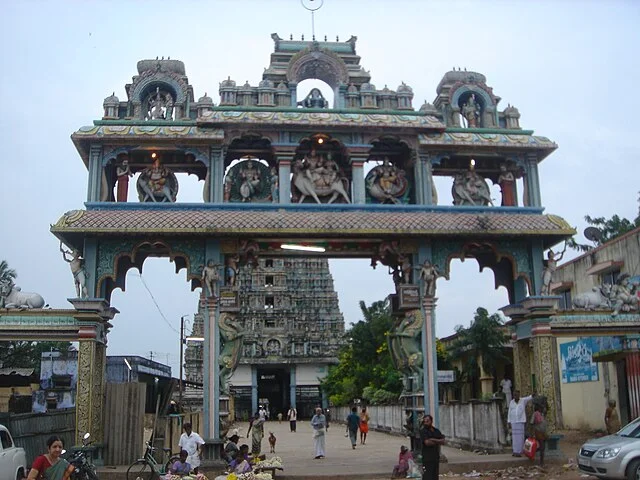
Amritaghateswarar Abirami Temple is renowned for its association with the legend of Markandeya, a sage who worshipped Shiva to overcome a curse of early death. According to the story, Shiva saved Markandeya from the god of death, Yama, granting him eternal life. This tale is central to the temple’s role as a site where devotees pray for long life and protection against untimely death.
Another popular legend linked to the temple involves Abirami Bhattar, a devotee of the goddess Abirami. According to the story, Abirami Bhattar displayed his unwavering devotion through the composition of the “Abirami Anthathi” hymn, believed to invoke blessings of the goddess. This hymn remains significant in Tamil devotional literature.
Rituals and Celebrations
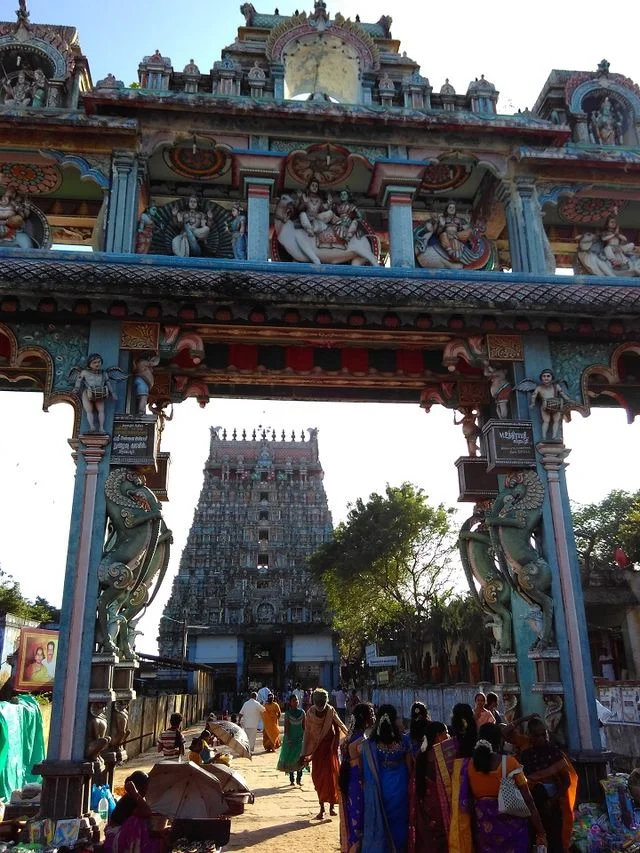
The temple holds regular pujas (worship ceremonies) and annual festivals that draw thousands of devotees. Notably, the 60th and 80th birthdays of devotees, known as “Shastiapthapoorthi” and “Sathabhishekam,” are celebrated with rituals here, following the tradition of seeking divine blessings for longevity. The temple also celebrates festivals like Maha Shivaratri, which involves nighttime worship and fasting in honor of Shiva.
During these ceremonies, priests perform rituals to honor Shiva and Abirami, and devotees participate in prayers to seek the deities’ blessings. Rituals often include offerings, chanting, and processions, creating a vibrant spiritual atmosphere within the temple complex.
Inscriptions and Epigraphy
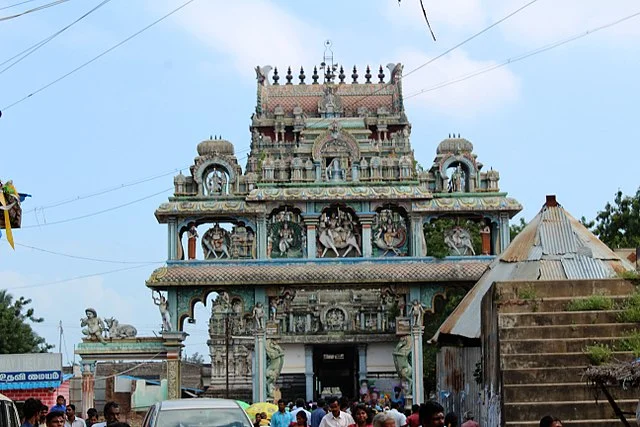
The temple holds several inscriptions dating from the Chola period that provide historical details about Thirukkadaiyur and its surrounding regions. These inscriptions document land grants, tax exemptions, and gifts made by rulers and local patrons to maintain temple operations. In addition to detailing economic transactions, the inscriptions give valuable information about the political landscape and social structure of the period.
Through these records, historians and archaeologists gain insights into the economic practices, religious devotion, and social hierarchies of medieval Tamil Nadu. The inscriptions serve as essential primary sources for understanding the regional dynamics of Chola rule and subsequent Nayaka administration.
Preservation and Conservation
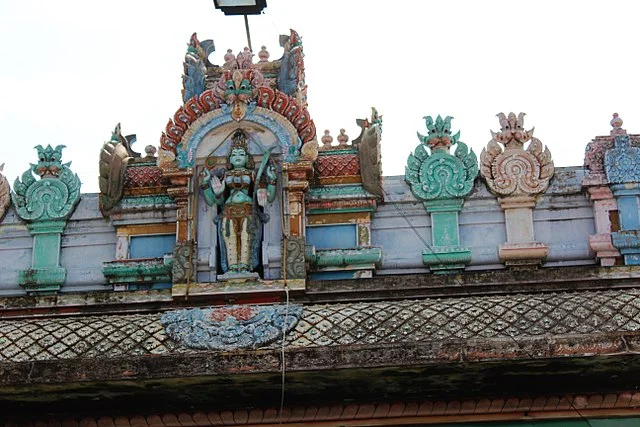
Over the years, the Amritaghateswarar Abirami Temple has undergone several rounds of restoration. The Archaeological Survey of India (ASI) and local temple authorities continue to maintain and preserve the structure, ensuring the protection of its inscriptions, artwork, and architecture. Due to its historic value, the temple remains a focus for heritage conservation efforts, balancing the need for structural upkeep with the preservation of ancient cultural heritage.
Conclusion
Amritaghateswarar Abirami Temple in Thirukkadaiyur stands as a testament to South Indian temple architecture and the enduring significance of Shiva worship. The temple’s legends, rituals, and historical inscriptions enrich our understanding of Tamil Nadu’s religious and cultural history. It remains a prominent site for devotees seeking blessings for longevity, and its preservation efforts highlight the importance of safeguarding such heritage sites for future generations.
Source:

